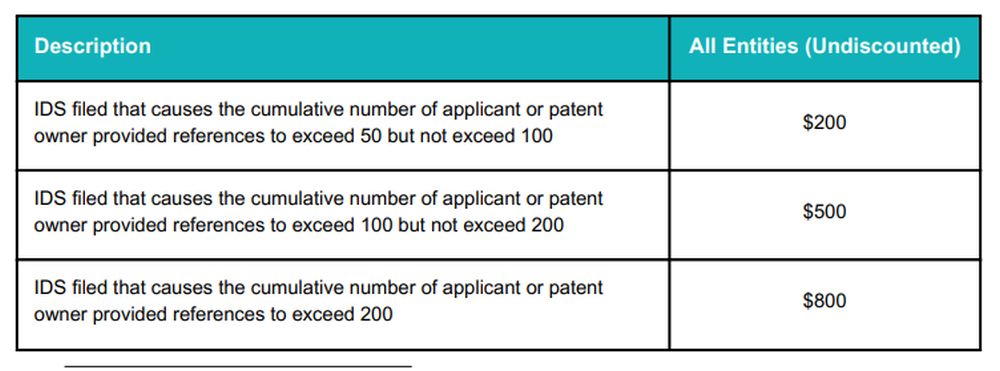- within Intellectual Property and Energy and Natural Resources topic(s)
Effective January 19, 2025, the United States Patent and Trademark Office ("USPTO") is implementing new fees associated with filing and prosecuting patent applications, as well as maintaining issued patents.1 Notable fee increases are highlighted below.
General Fee Increases
The USPTO is implementing general increases across the board.While more detailed information can be found at the links below, increases include:
- Design patent fees (filing, search, examination, and issue fees);
- Excess claim fees (for each independent claim over three and each claim over twenty);
- Request for continuation (RCE) fees (nominal increase for first RCE fee, but second and subsequent requests have substantially increased fees); and
- Patent Trial and Appeal Board (PTAB) AIA trial proceedings.
Continuing Application Fees
Newly added this year are fees for continuation applications which have a priority claim greater than or equal to 6 years from the date of filing:

The fees are ostensibly intended to "partially offset foregone maintenance fee revenue resulting from later-filed continuing applications." 2 The real effect, however, is to favor compact prosecution over the practice of keeping an application pending in a patent family. The latter practice is often deemed favorable by applicants because it allows corrections to be made without requesting reexamination of an issued patent and it also allows a child application's claims to be tailored – based on the original parent's disclosure – to cover new or competing products, both of which may better position a patent family for litigation.
Additionally, because the final rule includes divisional applications in the broader category of continuations,3 prosecution delays by the USPTO may result in increased filing costs at no fault of the applicant if applicants wait until a restricted application is allowed to file a divisional application. As a result, applicants may want to consider filing divisional applications shortly after a restriction requirement is responded to rather than at allowance. Ultimately, the increased fees mean patent applications will have to weigh the value of an active patent family against the increased filing costs.
Increased IDS Fees for Large Submissions
The USPTO has also increased the fees associated with submitting an information disclosure statement (IDS) where the IDS would result in applicant or patent owner provided references exceeding certain threshold amounts:

The intended goal of the fee increase is to discourage the submission of irrelevant or cumulative prior art, thereby reducing the examination burden. Applicants are responsible for monitoring the total number of references submitted. Additionally, while the filing of a new application resets the count, the filing of an RCE does not.4
The fees do not relieve applicants of their duty of candor.5 As a result of these fees, applicants will need to more carefully determine the materiality of individual references to determine whether the reference merits submission. Material references should still be submitted, but non-material or cumulative information should not be submitted to minimize IDS fees.
Conclusion and Additional Information
If applicants are in a position to file before January 19, it would be advantageous to do in order to take advantage of the present (2024) rates. Additional information about the 2025 fee increases can be found at the following links:
- https://www.federalregister.gov/documents/2024/11/20/2024-26821/settingand-adjusting-patent-fees-during-fiscal-year-2025
- https://www.uspto.gov/about-us/performance-and-planning/fee-setting-andadjusting
Footnotes
1. See 89 Fed. Reg. 91898 (Nov. 20, 2024).
2. Id. at 91910 (Nov. 20, 2024).
3. Id. at 91909.
4. Id. at 91924 ("Note, however, that a request for continued examination (RCE) is not the filing of a new application, and thus the count will not reset when an RCE is filed.").
5. See 37 C.F.R. § 1.56, 1.555 (applicants are obligated to submit information material to patentability); see also Therasense, Inc. v. Becton, Dickinson & Co., 649 F.3d 1276, 1288 (Fed. Cir. 2011) (en banc).
The content of this article is intended to provide a general guide to the subject matter. Specialist advice should be sought about your specific circumstances.

